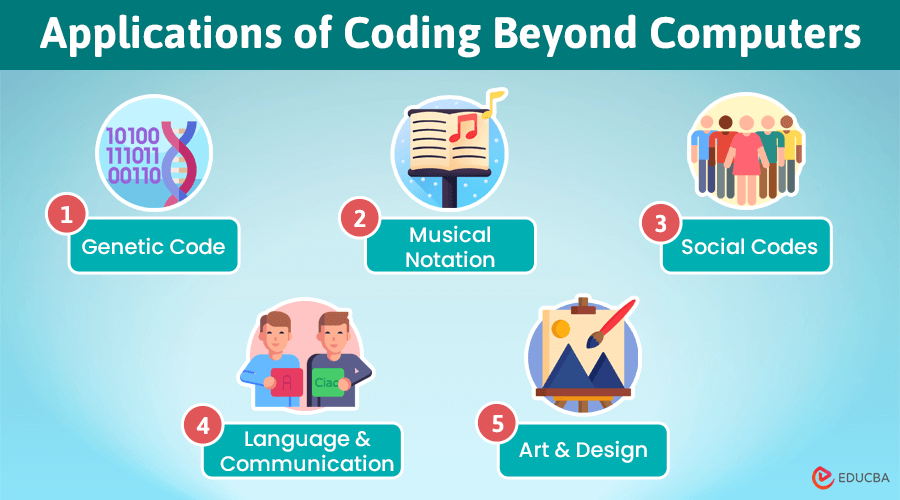
What is Coding Beyond Computers?
Coding beyond computers refers to the idea that coding is not just limited to computer programming but is also involved in how our DNA works, how we communicate, and even how we behave in society.
When we think about coding, we often picture computer programs and lines of code on a screen. However, coding, at its core, involves taking information and presenting it in a format others can understand. In computer science, this means writing instructions for a machine to follow.
But coding is not just about computers. According to Private Internet Access (PIA), it reaches into various aspects of our lives, everyday systems, and the natural world.
Applications of Coding Beyond Computers
Following are the applications of coding beyond computers:
1. Genetic Code
What It Is: DNA uses a code made up of four building blocks—Adenine (A), Thymine (T), Cytosine (C), and Guanine (G).
How It Works: These blocks combine in different patterns to create genes. These genes determine everything from the color of our eyes to how our bodies function.
Why It Matters: Just like a computer program, genetic code is complex. Small changes in this code can lead to big differences. Understanding this code has helped us make advances in medicine and farming.
2. Musical Notation
What It Is: Musical notation is a system that represents the pitch, rhythm, dynamics, and tempo of a piece of music.
How It Works: These symbols tell musicians what notes to play, how long to play them, and how loudly. This helps musicians understand and perform a piece of music.
Why It Matters: Musical notation has rules, similar to a programming language. For example, a treble clef at the start of a staff tells musicians which notes to play. Learning to read these symbols is like learning a new language.
3. Social Codes
What They Are: Social codes are the unwritten rules that guide how we interact with others.
Examples:
- How we greet people, like a handshake or a bow.
- What we wear to different events, like formal or casual clothes.
Why They Matter: Social codes help keep interactions smooth and predictable, similar to how computer code keeps programs working correctly. Misunderstanding these codes can lead to confusion or problems, just like errors in computer code can cause issues.
4. Language and Communication
What It Is: Language itself can be considered the oldest and most pervasive form of coding. Language is a structured system of symbols (words) and rules (grammar) that lets us share ideas and information.
How It Works: We use words and grammar to express our thoughts and understand others. Each language has its own set of rules, just like a programming language has its own syntax.
Why It Matters: In linguistics, the study of semiotics explores how meaning is created and understood through signs and symbols. This is similar to how programming languages function, where the code must be properly formatted and sequenced to work correctly.
5. Art and Design
Art and design are also deeply rooted in coding principles, such as color, layout, and patterns.
Examples:
- In visual art, artists use color and shape to convey messages or feelings.
- In graphic design, designers use icons and text to make information easy to understand.
Why It Matters: Today, some art is created with algorithms, which combine creativity with coding. This shows how coding can be a tool for artistic expression.
Final Thoughts
Whether it’s music, genetics, or social behavior, coding plays a big role in shaping our world. Understanding coding beyond computers helps us see how interconnected everything is.
By exploring coding beyond computer languages, we can appreciate its importance and how it connects various aspects of our lives.
Recommended Articles
We hope you enjoyed reading this article on coding beyond computers! For more insights into coding, refer to these related articles:
